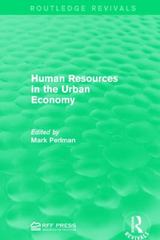economics 404
5. (a) Discuss the ways in which money can contribute to the smooth working of an economy. (20 marks) (b) Explain the likely economic effects if: the supply of money grows at a faster rate than a country's production of goods and services the supply of money grows at a slower rate than a country's production of goods and services. (20 marks) (c ) (1) Explain what is meant by the term price inflation. (ii) Name the main index used to measure price inflation in the Irish economy. (iii) Outline the economic consequences of a rise in the rate of price inflation in Ireland. (35 marks) [75 marks]3. (a) (i) State and explain FOUR factors which affect a consumer's demand schedule, other than the price of a good itself. (ii) Explain the economic rationale for assuming that a person's demand curve for a normal good slopes downward. (30 marks) (b) For something to be considered an economic good, it must possess certain characteristics. State and explain THREE of these characteristics. (20 marks) (c) A consumer spends all income on two goods, Good A and Good B. Both goods are normal goods but they are not complementary goods. The price of Good A is reduced and the price of Good B remains unchanged. The consumer continues to spend all income on the two goods. Distinguish between the substitution effect and the income effect of the price reduction in Good A. (25 marks) [75 marks] 4. (a) Define each of the following: (i) Supply price of a factor of production. (ii) Transfer earnings. (iii) Economic Rent. (20 marks) (b) A principal factor influencing the demand for labour by an individual firm is the Marginal Revenue Productivity of Labour (MRP). (i) Explain what is meant by the underlined term. (ii) Discuss the factors, other than MRP, which influence the demand for labour by an individual firm. (30 marks) (c) The diagram below represents the supply curve of labour to a particular firm. Supply Curve Wage rate Supply of Labour Explain the effect which each of the following developments may have on this supply curve. Illustrate each answer by means of a diagram. (i) The workers shift their preference towards increased leisure time. (ii) The workers' trade union negotiates a minimum wage. (25 marks) [75 marks]1. (a) Outline THREE key features of an oligopolistic market and state ONE example of an oligopolistic market in Ireland. (20 marks) (b) With the aid of ONE clearly labelled diagram: (i) Explain the shape of the demand curve facing a firm in oligopoly. (ii) Explain the relationship between this demand curve and the firm's marginal revenue curve. Explain the long run equilibrium position of this firm. (40 marks) (c) Explain THREE methods by which firms in oligopolistic markets may collude. (15 marks) [75marks] 2. (a) Define (i) price elasticity of demand and (ii) cross elasticity of demand. In each case, state the formula by which it is measured. (20 marks) (b) When the price of Good X is (27, the quantity demanded of Good Y is 1,200 units. When the price of Good X falls to (23 (the price of Good Y unchanged) the quantity demanded of Good Y falls to 800 units. (i) Using the cross elasticity of demand formula, calculate the cross elasticity of demand for Good Y. Show all your workings. (ii) Is Good Y a substitute for or complement to Good X? Explain your choice. (25 marks) (c) A firm has the following price elasticities of demand for two goods, Good X and Good Y: Good X ..... 2.0 Good Y ..... 0.5 What changes, if any, should the firm make in the selling price of each of the goods to increase overall revenue. Explain your answer. (30 marks) 175 marks]









